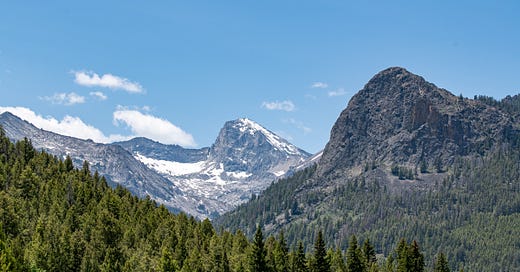One of my favorite things to do is walk through an evergreen forest. As I inhale the silence and stillness, the trees gather me into their embrace, offering me sanctuary. One tree that I particularly love to see within these forests is the pine tree.
Who doesn’t love the stately beauty of a pine tree or the refreshing scent it emits after rubbing a needle between your fingers? Lucky for us pine trees grow all over the world.
Besides its medicinal qualities, pine plays an important part in the ecosystem. They provide food and shelter for wildlife, act as erosion control and the pine pollen that falls to the ground feeds the soil microbes which enriches the soil.
Plus, evergreens release phytochemicals that can boost your immune system when inhaled. I recommend getting to know your local species for it has much to offer.
Description
Common name: Pine
Scientific name: Pinus spp.
Family: Pinaceae (Pine family)
You may see a conifer and think it is a pine when it could be a fir, spruce, or Douglas fir (not a true fir, btw). You don’t want to confuse them because some evergreens are poisonous such as the yew (Taxus spp).
Pine trees are evergreen conifers and the bark will be furrowed or scaled. In the United States, we have over 70 species of pine trees! They all prefer higher elevations with plenty of moisture.
You’ll know it’s a pine because it has long needles in sheathed bunches of two, three, or five depending on the species.
Each tree produces male and female cones. The soft and spongy male cones are small and release pollen in the spring, while the female cones are large and woody and house the seeds.
Harvesting
Parts used: needles, twigs, inner bark, resin, pollen/cones
Needles: Gather year-round from freshly fallen branches or collect needles from multiple trees to minimize impact.
Twigs: Gather year-round from freshly fallen branches
Cones: Collect nuts from female cones in the fall. In the spring gather male cones when they are full of pollen.
Resin (or pitch): Use whenever it drips from the tree before it turns black - spring or fall. NEVER damage a tree on purpose to collect resin. The inner bark also contains resin: don’t collect inner bark from the main tree trunk, as this can harm the tree; use freshly fallen branches instead.
Ecological considerations: Do not harvest from young trees or trees under stress from pine beetles, fire, or drought. Only harvest pine nuts when abundant since many animals depend upon them as a food source.
Medicinal Benefits & Uses
Pine is best known for its affinity for the respiratory system. As an herbal steam, pine opens the lungs, relieves coughs, loosens mucus, and fights germs. It also works as a cough drop, infused honey, or syrup.
The needles are high in vitamin C - and even more so in winter. They make a great tea or decoction to drink when you feel a cold coming on.
Use the resin in a salve to heal minor wounds and as an antibiotic ointment to prevent infection. The pollen is highly nutritious, full of antioxidants, and is an anti-inflammatory.
Preparations
Needles: tea, decoction, salves, oil, oxymel, tincture, steaming herb
Resin: tincture, honey extraction, oil
Inner bark: antimicrobial wash, poultice, infuse in bathwater
Twigs: tincture, honey extraction
Pollen: infusion, tincture
Spiritual Uses
Considered the tree of peace, when the branches and twigs are used as decoration they provide healing and joy for your home. Burn it to bring peace and purification to your space.
Pine is a common wood used to build coffins because it represents immortality - reminding us that death is nothing but a transition to a different reality. Burn the needles in times of grief to bring harmony and healing.
Herbal Actions
diuretic (fluid loss)
antimicrobial
inflammatory modulator
diaphoretic (causes sweating)
expectorant (clears mucus)
vulnerary (heals wounds)
nutritive
Contraindications: Do not use any portion of the pine tree if pregnant or breastfeeding. Pine resin may cause allergic dermatitis, so use it with caution on sensitive skin. Allergic reactions to pine nuts and pollen are uncommon but may occur, especially if you are sensitive to other pollens and nuts.
Interesting Facts:
Pine cones can stay on a tree for more than 10 years before falling to the ground.
Only 20 varieties of pine trees worldwide produce cones with large enough pine nuts for harvesting.
The cleaning solution Pine-sol was originally made with pine oil, but it no longer contains it due to cost.
The pine family contains some of the oldest species of trees, dating back thousands of years.









Love all the beneficial information on pine tree and how through you are.
Wow, pine sure is incredible! I love the scent but had no idea of its other benefits.